
Have you ever wondered why certain brands seem to take thrive right away? A strong marketing force known as macro influencers is responsible for many of these success stories.
These digital celebrities, who have anywhere from 100,000 to over a million followers, are revolutionizing the way that marketers interact with consumers. Are they the right choice for your marketing plan, though?
I’ll explain the definition of macro influencers, their significance, and how to tell if they’re the final piece you need to complete your marketing strategy in this tutorial.
Let’s get started.
Understanding Macro Influencers in Today’s Digital Landscape
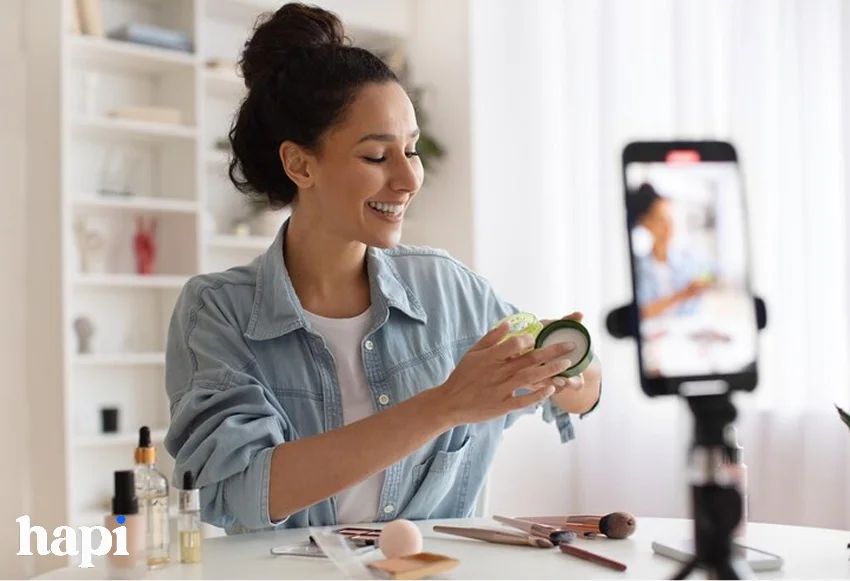
Within the world of digital marketing, macro influencers hold a special place. Although they are not world-famous, they have enough followers to make a big impression.
Think of them as the middle class influencers; they have many followers but are more approachable than well-known celebrities.
How Macro Influencers Differ from Other Influencer Types
The influencer landscape typically breaks down into four categories:
– Nano influencers: 1,000-10,000 followers
– Micro influencers: 10,000-100,000 followers
– Macro influencers: 100,000-1 million followers
– Mega/celebrity influencers: 1M+ followers
Micro influencers usually focus on communities that aligns with their niche but, macro influencers care about improving on their connection with audience unlike mega-influencers.
This category is ideal for a fitness Instagram star with 750,000 followers or a fashion YouTuber with 500,000 subscribers. Because they are experts in their field and consistently produce high quality content, and created a decent community.
The Reach and Impact of Macro Influencers
Sales of CeraVe skincare products increased by 65% when the brand was suggested by beauty influencer Hyram Yarbro, who has about 800,000 followers. This proves the market power these influencers possess.
Even when engagement rates decline as the number of followers increases, macro influencers continue to offer remarkable metrics. Macro influencers usually have engagement rates between two and five percent, which is lower than micro influencers but much greater than the majority of celebrity accounts, according to Influencer Marketing Hub.
5 Key Characteristics that Define Macro Influencers
What separates macro influencers from other digital creators? Here are their defining traits:
1. Professional content production: Macro influencers typically invest in high-quality equipment and editing, creating polished content that rivals traditional media.
2. Established credibility: By creating regular, high quality content over time, they have established authority in specific niches.
3. Monetized platforms: Most earn full-time incomes from their platforms through sponsorships, affiliate marketing, and product lines.
4. Diverse audience demographics: Their follower bases mostly belongs to multiple demographics rather than highly specific niches.
5. Cross-platform presence: They maintain significant followings across multiple social platforms, maximizing their potential reach.
The Strategic Value of Macro Influencers for Brands
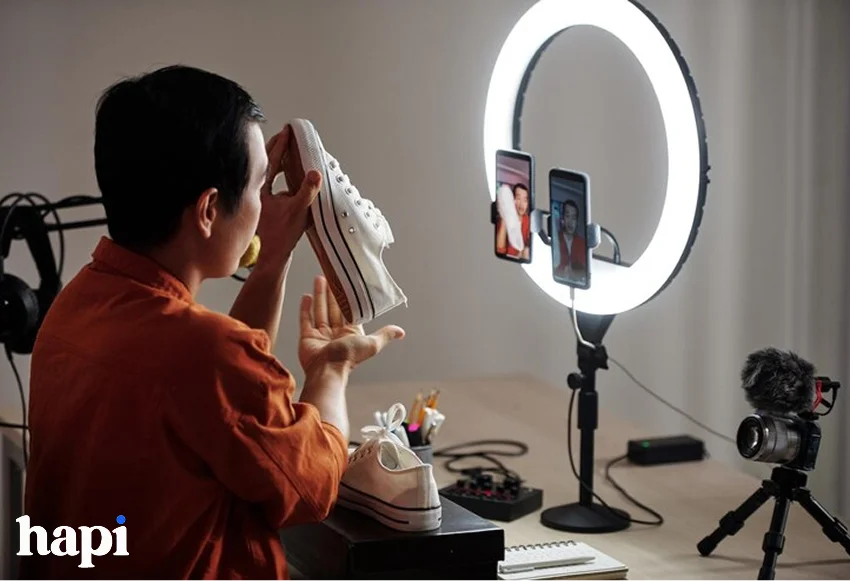
Investing in macro influencers is a big commitment. You must acknowledge the value they add to your marketing plan before considering budgets.
How Macro Influencers Drive Brand Awareness at Scale
Gymshark, a fitness brand, decidec to work with big fitness influencers instead of traditional advertising when they decided to grow in North America. The result? They grew from £0 to £100 million in annual revenue in just six years.
The math is simple but powerful:
– With a 3% engagement rate, a macro influencer with 500,000 followers can reach 15,000 highly engaged users within each post.
– Factor in algorithmic reach beyond followers, and your brand message potentially reaches hundreds of thousands
This scale enables rapid brand awareness that traditional marketing channels struggle to match, particularly when targeting digital-native demographics.
Converting Influence into Measurable Marketing Results
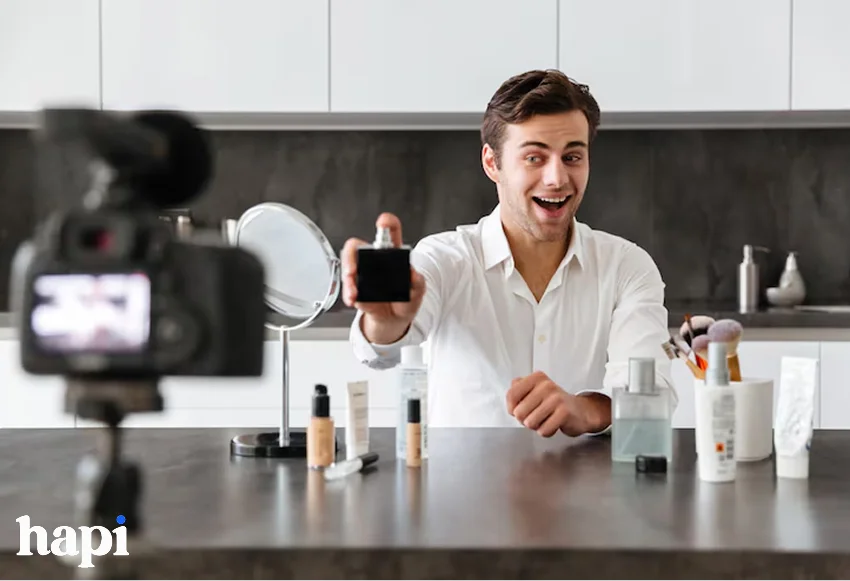
The real power of macro influencers lies in their ability to drive specific marketing objectives:
1. Direct response conversion: Links with tracking parameters lead to accurate measurement of traffic, sign-ups, and purchases coming directly from influencer content.
2. Social proof at scale: Your brand gains credibility when a well-known influencer promotes your product.
3. Content amplification: Brand messages reach audiences who actively avoid traditional advertising.
With macro influencers offering the most balanced mix of reach and engagement, 89% of marketers believe that the return on investment (ROI) from influencer marketing is on par with or better than other marketing channels, according to MediaKix.
When Should Your Brand Partner with Macro Influencers?
Consider partnering with macro influencers when:
– You need to rapidly build brand awareness in competitive markets
– You’re launching products targeting a broad but defined demographic
– You have sufficient budget to properly support the partnership
– Your product benefits from visual demonstration or storytelling
– You need professionally produced content for repurposing
7 Benefits of Incorporating Macro Influencers into Marketing Strategy
Looking beyond the basics, macro influencers offer several strategic advantages that deserve closer examination.
Access to Larger, More Diverse Audience Demographics
Macro influencers are perfect for brands with a wide appeal because they usually get followers from different demographic groups.
Daniel Wellington was able to reach a wide range of buyers that have the same fashion style as them, when they collaborated with macro fashion influencers in this niche.
This strategy helped build their $230 million business with minimal traditional advertising.
Their audiences often include:
– Multiple age brackets (though typically strongest with Gen Z and Millennials)
– Geographic diversity beyond single regions or cities
– Various income levels and purchasing behaviors
This diversity allows brands to test messages across different segments without requiring multiple partnerships.
Enhanced Brand Credibility Through Celebrity Association
Macro influencers occupy a space between everyday consumers and untouchable celebrities. This middle ground creates a powerful credibility effect.
Sunday Riley, a skincare company, took advantage of James Welsh’s reputation for his honest reviews and great knowledge when they teamed up with this macro influencer.
The psychology works because:
– Followers perceive macro influencers as experts who’ve earned their status
– Their endorsements feel more authentic than traditional celebrity sponsorships
– They bridge the gap between aspirational celebrity and relatable peer recommendations
Creating High-Quality Content with Professional Influencers
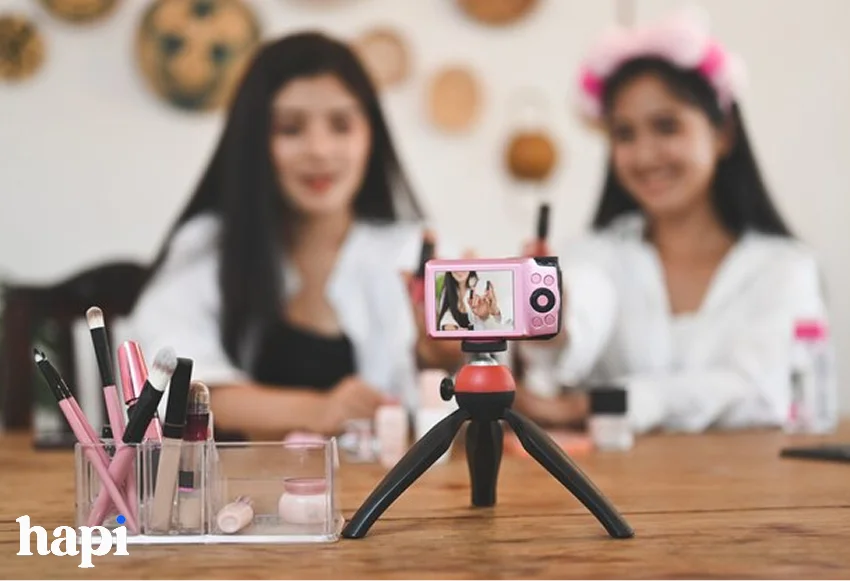
The production quality gap between micro and macro influencers is substantial. Most macro influencers:
– Invest in professional cameras, lighting, and audio equipment
– Have developed advanced editing skills or work with professional editors
– Understand storytelling techniques that boost engagement
– Have refined their content style through years of iteration
When fashion brand Revolve partners with macro influencers, they receive campaign assets that rival professional photo shoots at a fraction of the cost of traditional production.
Accelerating Social Media Growth Through Influencer Partnerships
Strategic macro influencer partnerships can significantly accelerate your own social account growth.
When food delivery service DoorDash partnered with macro food influencers, the collaboration helped them gain over 100,000 new Instagram followers in a single quarter.
This growth happens through several mechanisms:
– Tag exchanges and mentions drive follower migration
– Collaborative content encourages cross-audience discovery
– Influencer followers often follow brands they repeatedly see in sponsored content
Comparing Macro Influencers vs. Micro and Nano Influencers

Each influencer tier offers distinct advantages and challenges. Understanding these differences helps ensure you select the right partners for your specific goals.
ROI Differences: Where Do Macro Influencers Excel?
The ROI equation for influencer marketing involves balancing costs against outcomes. Here’s how macro influencers compare:
– Cost structure: Macro influencers typically charge $5,000-$10,000 per post, compared to $200-$2,000 for micro influencers
– Value creation: They deliver approximately 5-10x the reach of micro influencers but at 2-5x the cost
– Content quality: Professional production value often justifies higher rates
Macro influencers typically excel in scenarios requiring:
1. Rapid awareness building
2. Professional content quality
3. Broader demographic reach
4. Established credibility transfer
However, if you need hyper-targeted niche reach or maximum engagement rates, micro influencers often deliver superior ROI.
Engagement Rate Variations Across Influencer Categories
Engagement rates typically decrease as follower counts increase:
– Nano influencers: 5-10% engagement
– Micro influencers: 3-7% engagement
– Macro influencers: 2-5% engagement
– Mega/celebrity influencers: 1-3% engagement
How to Choose the Right Influencer Size for Your Goals
Match influencer tier to your specific marketing objectives:
| Marketing Goal | Best Influencer Tier |
|—————-|———————-|
| Rapid brand awareness | Macro or Mega |
| Maximum engagement | Micro or Nano |
| Community building | Micro |
| Content creation | Macro |
| Direct conversions | Mix of Macro and Micro |
| Product launches | Macro |
In order to increase engagement, the most advanced techniques use a pyramid model, with a larger base of micro influencers at the base and a few strategic macro influencers at the top.
How to Successfully Partner with Macro Influencers

A successful collaboration with macro influencers needs strategy, preparation, and clear communication.
Developing a Compelling Outreach Strategy for Influencers
Competition for macro influencer attention is fierce. Stand out with these approaches:
1. Research thoroughly: Follow their content for 2-3 weeks before outreach to understand their style, values, and current partnerships.
2. Personalize outreach: Reference specific content they’ve created and explain why your brand aligns with their platform.
3. Offer clear value: Explain not just compensation but how the partnership benefits their content strategy and audience.
4. Provide creative freedom: The best macro influencers won’t accept rigid scripts that compromise their authentic voice.
5. Consider exclusivity: Offering category exclusivity (even for limited periods) can attract premium influencers.
When skincare company Drunk Elephant contacts influencers, they send them free samples so they can test the products and provide honest review before deciding about collaborations.
Negotiating Fair Compensation and Partnership Terms
Macro influencer compensation depends on platform, audience demographics, engagement rate, and content type.
General guidelines for 2023:
– Instagram post: $5,000-$10,000
– YouTube video: $10,000-$20,000
– TikTok: $3,000-$8,000
– Multiple-post package: $15,000-$30,000
When negotiating, consider:
– Content rights: Will you repurpose their content? For how long?
– Exclusivity clauses: Will they avoid promoting competitors? For what duration?
– Performance incentives: Can you structure payments to reward exceptional results?
– Long-term potential: Multi-campaign commitments often secure better rates
A transparent approach addressing these points upfront prevents misunderstandings and builds stronger partnerships.
Creating Authentic Campaigns that Resonate with Audiences
The most successful macro influencer campaigns maintain authenticity while achieving brand objectives:
1. Provide clear guidelines, not scripts: Outline key messages but allow the influencer to adapt them to their voice.
2. Integrate naturally: The best collaborations feel like a natural extension of the influencer’s regular content.
3. Focus on storytelling: Encourage personal narratives about product experiences rather than feature lists.
4. Allow honest feedback: Encourage influencers to share genuine perspectives, including constructive criticism.
5. Create custom discount codes: Personalized offers (like “EMMA20”) reinforce the authentic connection.
In order to maintain authenticity while reaching marketing goals, Audible encourages its macro influencers to suggest books they have actually loved rather than promoting certain releases.
Measuring the Impact of Macro Influencer Campaigns

You’re working with assumptions rather than insights if you don’t analyze major factors. Before starting campaigns, define your metrics clearly..
Essential KPIs for Tracking Influencer Marketing Success
Different campaign objectives require different measurement approaches:
For awareness campaigns:
– Reach and impressions
– Follower growth during campaign periods
– Brand mention increase across platforms
– Branded hashtag usage
For engagement campaigns:
– Engagement rate (likes, comments, saves, shares)
– Comment sentiment analysis
– Story completion rates
– Content save rates
For conversion campaigns:
– Click-through rate (CTR)
– Cost per acquisition (CPA)
– Conversion rate
– Attribution analysis
– Unique coupon code redemptions
Balancing these metrics provides a comprehensive view of campaign performance across the marketing funnel.
Tools for Monitoring Macro Influencer Campaign Performance

Several specialized tools help track influencer campaign outcomes:
– Grin: Comprehensive influencer relationship management with performance tracking
– CreatorIQ: Advanced analytics for large-scale influencer programs
– Traackr: Influencer discovery and campaign measurement
– Brandwatch: Social listening to measure broader impact
– Google Analytics: Custom UTM parameters to track traffic and conversions
Even with sophisticated tools, establish campaign baselines before launch to accurately measure incremental impact.
Case Studies: Brands that Succeeded with Macro Influencers
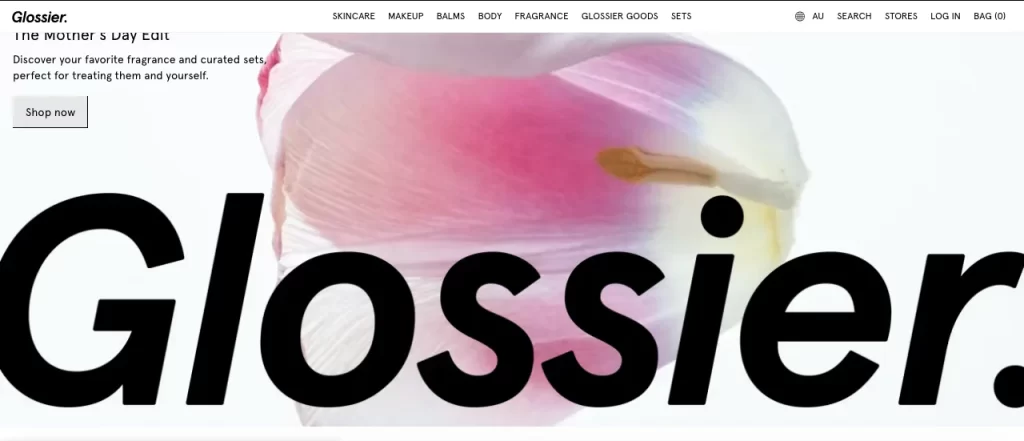
Learning from successful examples provides valuable strategic insights:
Case Study 1: Gymshark
Strategy: Long-term partnerships with fitness macro influencers who embody their brand values
Results: Grew to $1.5 billion valuation with minimal traditional advertising
Case Study 2: HelloFresh
Strategy: Commissioned in-depth cooking content from macro food influencers during peak pandemic periods
Results: 92% subscriber growth in a single quarter
Case Study 3: Glossier
Strategy: Built entire product development around macro influencer feedback
Results: Created cult products with built-in promotional support from involved influencers
These success stories share common elements: authentic alignment, creative freedom, and long-term relationship building over one-off promotions.
Potential Challenges When Working with Macro Influencers
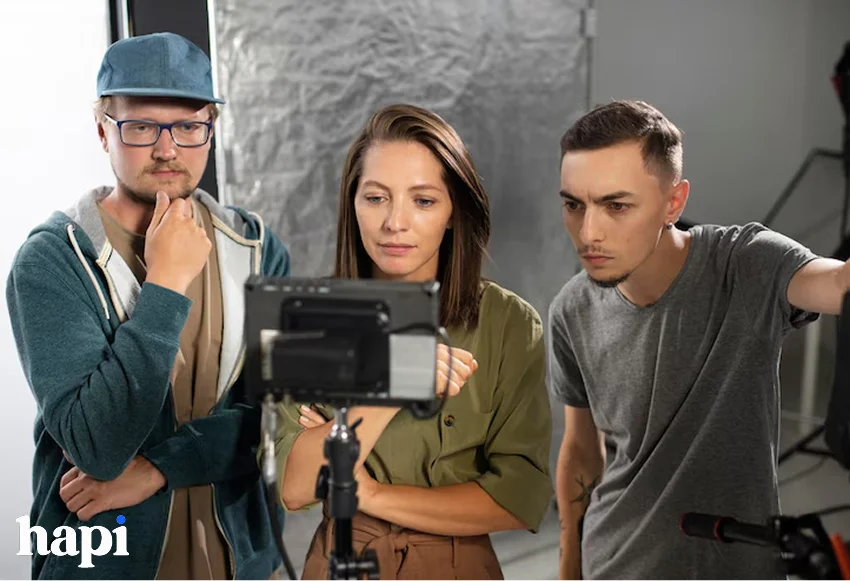
Despite their benefits, macro influencer partnerships come with unique challenges that require proactive management.
Managing Higher Costs and ROI Expectations
The substantial investment in macro influencers creates proportionally higher expectations for returns:
– Higher upfront costs require more rigorous justification
– Multi-stakeholder approval often extends timelines
– Traditional marketing metrics may not fully capture value
Mitigate these challenges by:
1. Starting with clearly defined success metrics
2. Establishing realistic timelines for results
3. Building comprehensive measurement frameworks beyond direct attribution
4. Testing with smaller engagements before major investments
Cosmetics brand Too Faced successfully manages this challenge by starting influencer relationships with limited-scope projects before expanding to larger partnerships.
Navigating Reduced Authenticity and Engagement Concerns
The infamous “sell-out” effect represents a legitimate risk when partnering with macro influencers:
– Audiences scrutinize commercial relationships more critically
– Multiple brand deals can diminish perceived authenticity
– Engagement may drop on obviously sponsored content
Address these concerns by:
1. Selecting influencers with demonstrated brand affinity
2. Creating genuine integration opportunities rather than obvious promotions
3. Focusing on value-adding content that benefits the audience
4. Allowing honest product assessments rather than demanding perfection
When Athletic Greens partners with health influencers, they encourage transparent discussions about taste challenges alongside benefits, maintaining credibility through honesty.
How to Maintain Brand Control in Influencer Partnerships
Balancing creative freedom with brand safety requires deliberate structures:
1. Provide clear guidelines: Document non-negotiable brand elements and messaging boundaries
2. Review without micromanaging: Check for compliance with key requirements without stifling creativity
3. Build relationships with managers: Many macro influencers work through talent management; strong relationships here facilitate smoother collaborations
4. Create escalation procedures: Establish clear protocols for addressing potential issues
5. Consider approval workflows: Implement two-stage approval processes for sensitive industries
Clothing brand Fashion Nova successfully maintains brand identity across hundreds of influencer partnerships through comprehensive yet flexible brand guidelines.
The Future of Macro Influencer Marketing
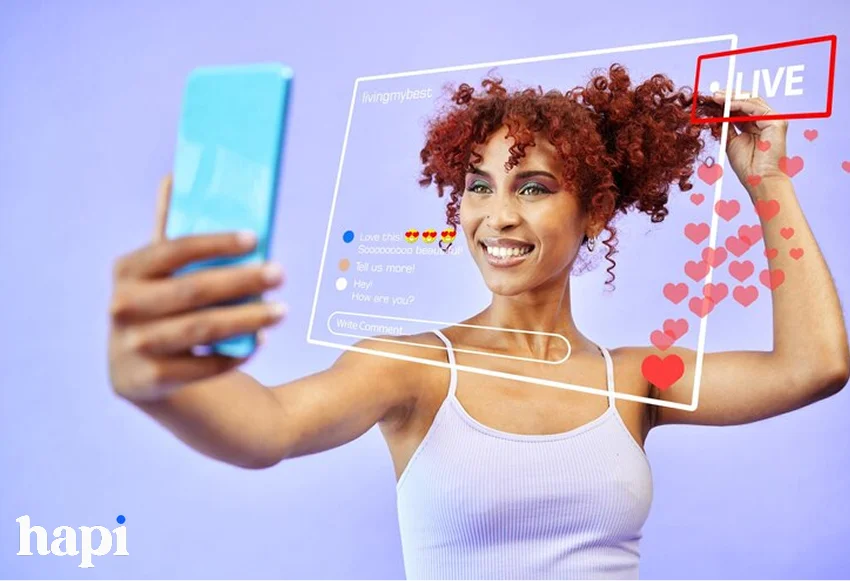
The influencer marketing landscape continues evolving rapidly. Understanding emerging trends helps future-proof your strategy.
Emerging Trends in Macro Influencer Collaborations
Several developments are reshaping macro influencer partnerships:
1. Long-term ambassadorships: Brands are shifting from one-off posts to extended relationships, sometimes lasting years.
2. Co-created products: Influencers are increasingly involved in product development rather than just promotion.
3. Performance-based compensation: Payment structures now often include performance incentives beyond flat fees.
4. Platform diversification: Strategic influencers are building presence across multiple platforms to provide comprehensive partnership opportunities.
5. Values alignment: Both brands and influencers increasingly prioritize shared values over mere audience demographics.
These trends suggest deeper, more integrated relationships will characterize successful influencer marketing moving forward.
How AI and Technology Are Reshaping Influencer Marketing
Technological advancements are transforming campaign execution and measurement:
– Predictive performance tools: AI can now forecast campaign outcomes based on historical data
– Automated content analysis: Visual recognition identifies brand presence without manual review
– Sentiment analysis: Natural language processing evaluates audience reactions more comprehensively
– Dynamic compensation models: Data-driven pricing creates more equitable partnership terms
– Virtual influencers: Computer-generated personalities like Lil Miquela (with over 3 million followers) offer brand-controlled alternatives
While technology enhances efficiency, successful brands balance automation with human relationship management.
Building Long-Term Relationships Instead of One-Off Campaigns
Instead of focusing on transactional interactions, the most successful influencer programs concentrate on building relationships:
1. Involvement beyond promotion: Inviting influencers into product feedback sessions, events, and brand planning
2. Consistent communication: Maintaining contact between campaigns rather than only during active promotions
3. Career development support: Helping influencers achieve broader professional goals beyond individual campaigns
4. Exclusivity with benefits: Offering premium compensation for category exclusivity rather than expecting it as standard
5. Authentic appreciation: Recognizing influencers as creative partners rather than just distribution channels
Fenty Beauty exemplifies this approach by maintaining ongoing relationships with macro beauty influencers through consistent engagement, exclusive previews, and genuine community building.
Conclusion: Making Macro Influencers Work for Your Brand
Compared to typical celebrities, macro influencers have a greater audience connection and a wider reach, making them an important part of the marketing world. By creating high-quality content, increasing trust, and raising awareness, they can definitely increase brand growth when included into larger marketing plans.
Success requires thoughtful partner selection, authentic campaign development, and comprehensive measurement frameworks. By considering these partnerships as genuine collaborations rather than just advertising channels, brands can appreciate the full potential of macro influencer marketing.
The question isn’t whether macro influencers are important for your brand – it’s how to effectively transfer their power within your specific marketing context.


